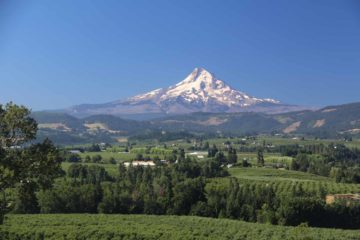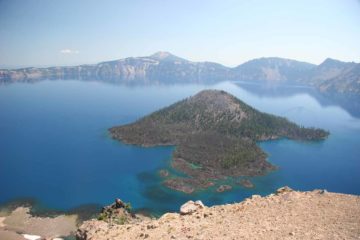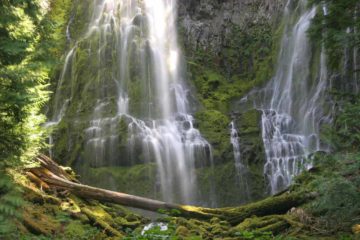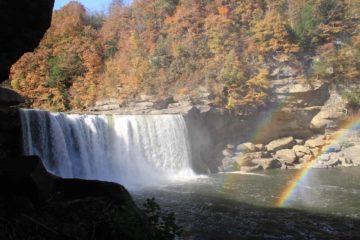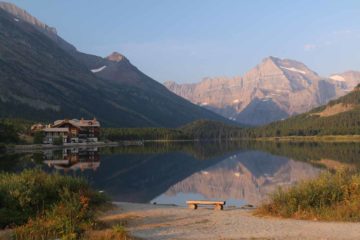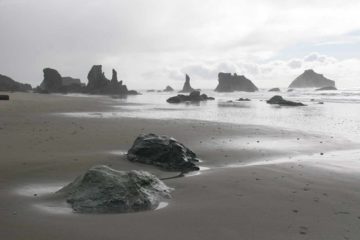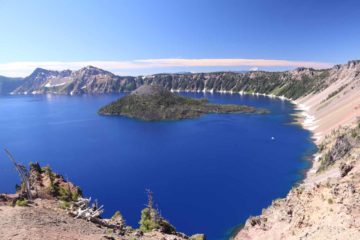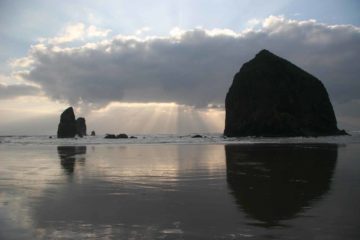About Multnomah Falls
Multnomah Falls is easily the Columbia River Gorge’s most famous waterfall and could very well be the state of Oregon’s prime natural attraction. While our visits here have constantly shown that it was always busy here (hardly surprising as it’s said to be visited by over 2 million people a year), all that was forgotten once we stood before this towering 620ft two-tiered column of water with year-round flow. In fact, we’ve frequently seen this waterfall proclaimed to be the second tallest year-round waterfall in the United States and the fourth tallest in North America. Whether these claims are true or not, it felt like all the academic trivia didn’t matter so much as we were content to simply enjoy it for what it was – a majestic waterfall! Thus, we could totally understand its popularity, especially considering it was pretty close to Portland. Heck, we enjoyed this waterfall so much that we even felt compelled to put it on our Top 10 List of Waterfalls in the USA.
Even though we’ve seen quite a few towering waterfalls of at least this size, what really made this one stand out was that it seemed to have a bit of heritage to go with it. Case in point, there was an arched bridge spanning across the waterfall’s lower 69ft drop. Called the Benson Bridge, it was built in 1914 and named after a Norwegian-born lumber baron who deeded this falls as well as a few others to the City of Portland. I think it was this bridge that really made Multnomah Falls a recognizable icon. Fronting the falls was the historic Multnomah Falls Lodge, which was built in 1925 and had a classic look about it thanks to designer Albert E. Doyle who designed many recognizable buildings in Portland. These days, the lodge was being used as a souvenir shop, visitor center, and restaurant.
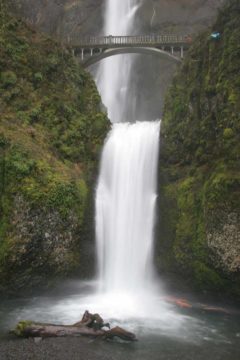
Julie and I have been to the falls on at least three separate trips so far. The first time was in the midst of some pretty nasty late Winter storms in late March/early April of 2009. As you can see from the photos on this page, the thickness of the Multnomah Falls was quite noticeable. As a result, the viewing area at the base was sprayed with mist so it wasn’t easy to take photos from there without waterspots getting on the lens.
The next two times we came here were in August of 2009 and 2017. While the falls took on a more slender appearance (see the photo at the top of this page), we felt it was just as beautiful (if not more) than the swollen state of the falls that we saw it in during the rain storm on our Spring 2009 visit. One thing we hadn’t done was to try to photograph the falls with Autumn colors, which I’m sure would add a whole different character to the scene.
Finally, we got to spend a bit of time at the visitor center due to bad weather on our first visit here. That gave us a chance to learn a bit more about the geology of this place as there were pretty cool 3-D models on display, waterfall comparisons between the Multnomah Falls and other famous ones, lots of historical and scientific tidbits, and more. I guess in the end, there were certainly many ways to linger here and soak in the experience.
[tabby] [tabby title=”Top Of The Waterfall”]Top of Multnomah Falls (Difficulty: 2.5)
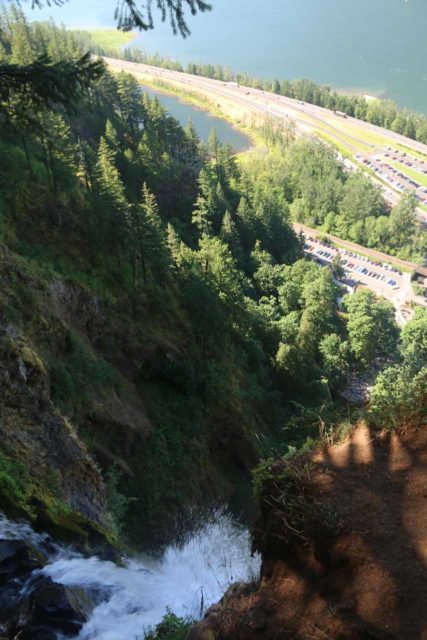
The paved ramp to ascend beyond the main lookout began behind the Multnomah Falls Lodge. After passing through a gate (which I’d iamgine would be closed if the there was trail work or if the conditions were too dangerous), the path made a couple of switchbacks before following beneath an overhang with cages set up to prevent large objects from falling onto the trail. Under rainy conditions, we spotted a temporary waterfall that flowed before the overhangs then underneath the trail eventually joining up with Multnomah Creek. After a quarter-mile, I approached the often crowded Benson Bridge, where I could look upstream at the 520ft upper drop of Multnomah Falls or look down at the crowded main lookout where people were already starting to look tiny.
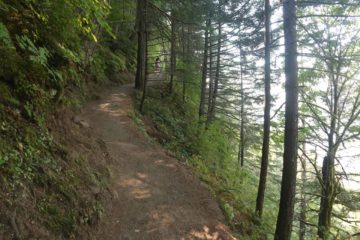
Some parts of the paved trail showed damage from tree roots growing beneath the asphalt (sometimes it’s just cheaper to have a natural trail instead of a paved one) while others had rocks strewn across them. Some of the switchbacks revealed partial glimpses of the Multnomah Falls while others revealed parts of the Columbia River. The climb actually topped out at around switchback 7 or 8, where it climbed about 895ft up to that point. Then, the trail started descending for the remaining switchbacks before a signed trail junction took me onto the final spur leading to the overlook above the top of Multnomah Falls. The continuation of the main trail kept going towards Larch Mountain.
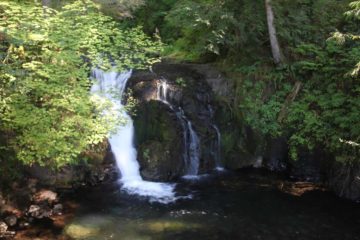
While this lookout platform was nowhere near as busy as further below, there were always at least a handful of people around so it was still relatively busy. When I had my fill of this spot, I went back the way I came initially climbing the first few switchbacks then descending the rest. During the descent, I tried to use my momentum to make quick progress and get back down in nearly half the time it took for me to go up. It took me just under 75 minutes to complete this hike.
[tabbyending]Related Top 10 Lists
Trip Planning Resources
Nearby Accommodations
This content is for members only. See Membership Options.Featured Images and Nearby Attractions
This content is for members only. See Membership Options.Visitor Comments:
Got something you'd like to share or say to keep the conversation going? Feel free to leave a comment below... Top of Multnomah Falls July 31, 2014 5:29 pm - Love this place. I'll make this short but sweet. I've been to the falls twice my self. The first time it was a typical Portland day,slight drizzle,mid spring when I ventured to the top of Multnomah Falls. Not difficult but not easy either. Basically a 5/10 on scale. The view on the other hand from… ...Read More
Top of Multnomah Falls July 31, 2014 5:29 pm - Love this place. I'll make this short but sweet. I've been to the falls twice my self. The first time it was a typical Portland day,slight drizzle,mid spring when I ventured to the top of Multnomah Falls. Not difficult but not easy either. Basically a 5/10 on scale. The view on the other hand from… ...Read More Multnomah Falls September 6, 2008 5:45 am - I haven't been to many falls, but one of my favorites is Multnomah Falls in Oregon. It is on the Columbia River in the Columbia River Gorge area, which is about 40 to 50 minutes east of Portland. There are also several other waterfalls along that area that are very nice to see and hike… ...Read More
Multnomah Falls September 6, 2008 5:45 am - I haven't been to many falls, but one of my favorites is Multnomah Falls in Oregon. It is on the Columbia River in the Columbia River Gorge area, which is about 40 to 50 minutes east of Portland. There are also several other waterfalls along that area that are very nice to see and hike… ...Read MoreVisitor Reviews of this Waterfall:
If you have a waterfall story or write-up that you'd like to share, feel free to click the button below and fill out the form...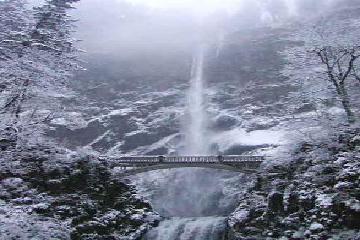 Multnomah Falls 2004, Oregon, USA July 10, 2013 5:18 am - I lived near this waterfall for a few years and never got tired of visiting it ...Read More
Multnomah Falls 2004, Oregon, USA July 10, 2013 5:18 am - I lived near this waterfall for a few years and never got tired of visiting it ...Read More

